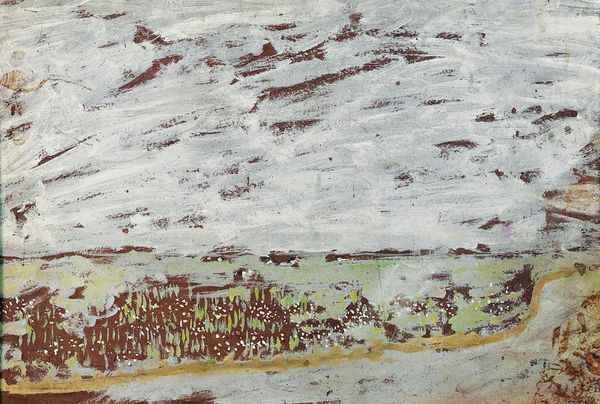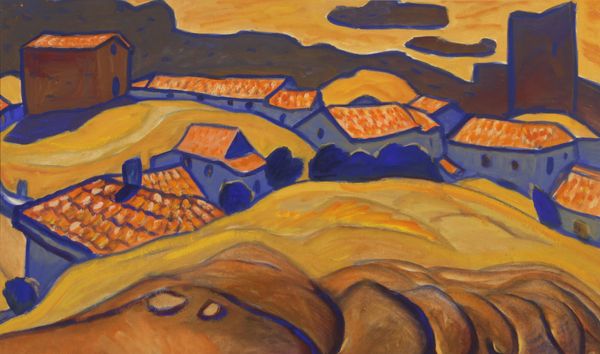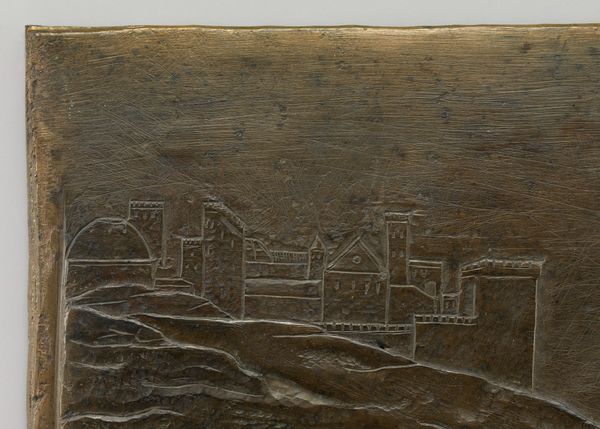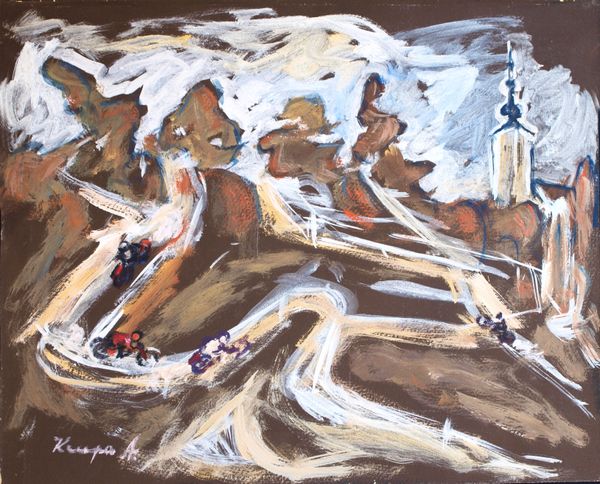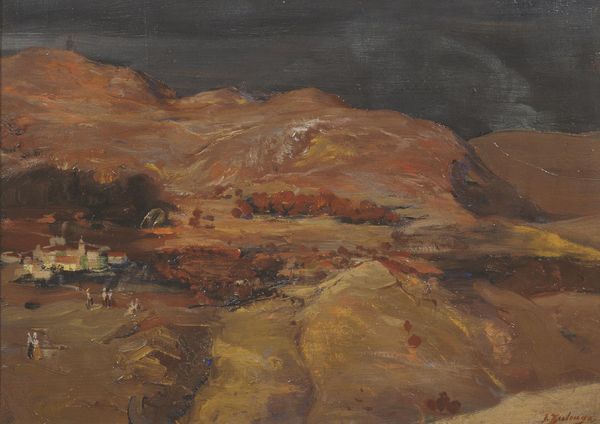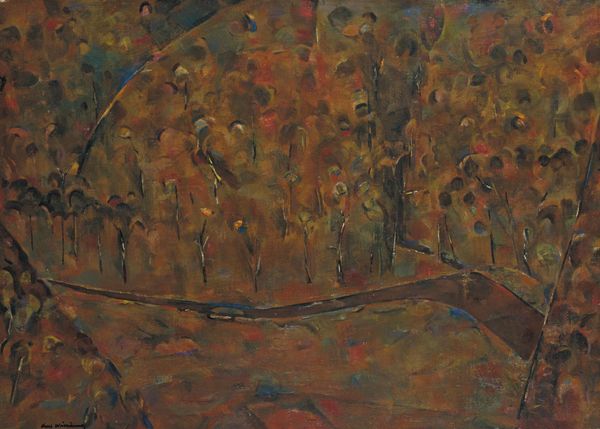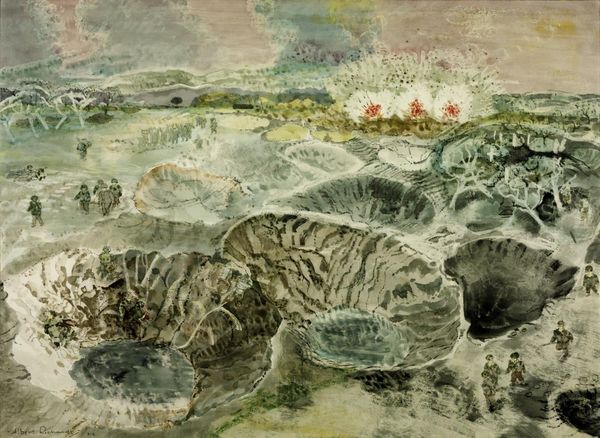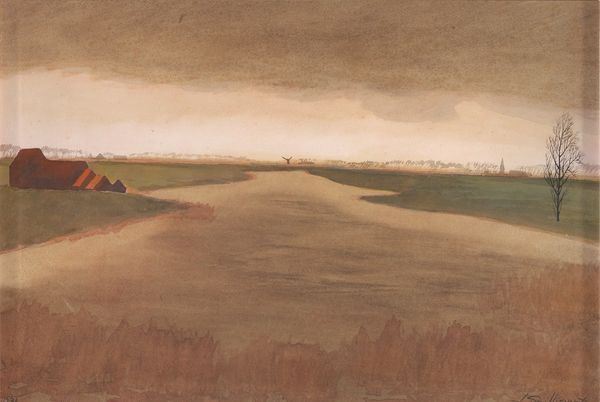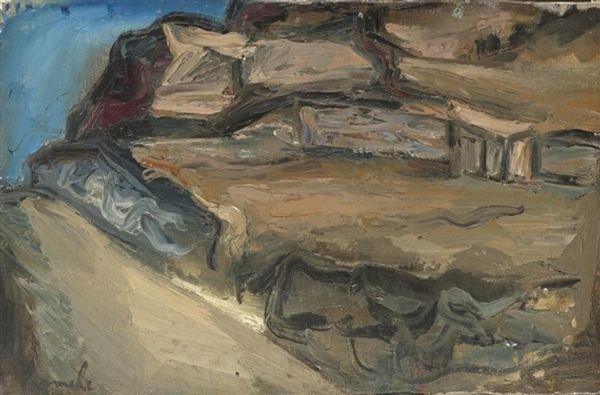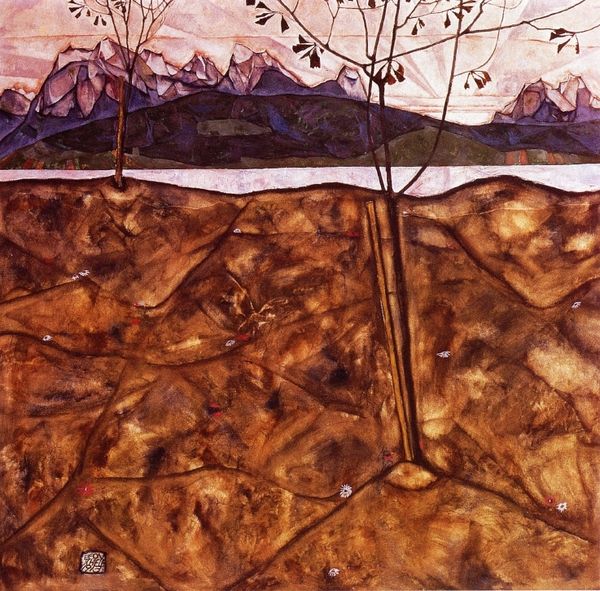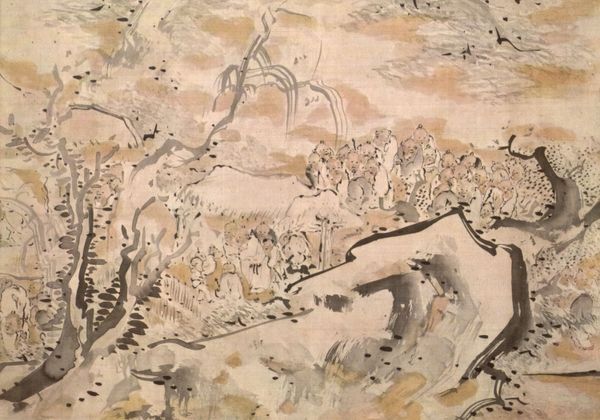
Dimensions: support: 559 x 686 mm frame: 700 x 826 x 73 mm
Copyright: © Angela Verren Taunt 2014. All rights reserved, DACS | CC-BY-NC-ND 4.0 DEED, Photo: Tate
Curator: Editor: So, this is Ben Nicholson’s 1928 (foothills, Cumberland). It's an oil painting, and the landscape feels quite stark. What strikes you most about this piece? Curator: Considering Nicholson's later forays into abstraction, this feels like a crucial turning point. The subdued palette and simplified forms challenge the romantic idealization of the British landscape, doesn't it? It's a working-class landscape. What do you make of that? Editor: Yes, definitely less picturesque than I expected. I hadn't considered the social commentary. Curator: Exactly. Nicholson perhaps is inviting us to reconsider whose story is being told in art. Editor: That's a really interesting perspective! I see it differently now. Curator: Good. Art is always about power and context.
Comments
tate 6 months ago
⋮
http://www.tate.org.uk/art/artworks/nicholson-1928-foothills-cumberland-n05951
Join the conversation
Join millions of artists and users on Artera today and experience the ultimate creative platform.
tate 6 months ago
⋮
During the 1920s, Ben and Winifred Nicholson lived in a house close to Hadrian’s Wall in Cumberland. Their lifestyle was simple and traditional; they shared at that time a belief in Christian Science. In their art too they sought to escape the sophistication of established artists, including Ben’s father William Nicholson. Painting mostly landscape, they cultivated a deliberately naïve style which was reinforced by an encounter in 1928 with the untutored amateur painter Alfred Wallis. Gallery label, September 2016
